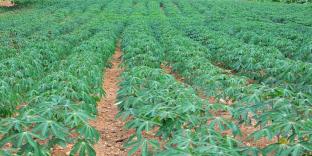ICOLEW
ICOLEW PROGRAMME
Integrated Community Learning for Wealth Creation (ICOLEW) in the District
The implementation of Integrated Community Learning for Wealth Creation-(ICOLEW) in Namayingo district started as a pilot in 2016 with support from DVV International.
The pilot phase covered two sub counties of Buyinja and Banda targeting two parishes in each; Gondohera, Syanyonja, Buwoya and Lutolo parishes respectively.
Twenty (20) Community Empowerment Groups (CEGs) were established in twenty villages with ten in each of the sub counties. Each CEG was managed by a trained Facilitator making a total of twenty trained CEG Facilitators.
The pilot phase was evaluated in 2019 which concluded the phase and recommended ICOLEW as a successor programme to the traditional Functional Adult Literacy (FAL).
The programme was rolled out to two new sub counties of Buswale and Buhemba in 2020 covering two parishes in each thus, Buswale, Madowa, Buhemba and Dohwe respectively.
In 2021 scale up was made to one parish in each of the pilot sub counties thus, Nsono and Buchumba in Buyinja and Banda respectively. Five CEGs were established in each of the Parishes. These are being supported from the 15% of the SDG and the Local revenue Allocations. The sub counties are also encouraged to support the programme.
Programme Goal and objectives
Goal
• To empower none and semi-literate youths and adults to effectively participate in the development process.
Specific Objectives
• To build and enhance literacy and numeracy skills of learners by 2025
• To build the livelihood and business skills of learners to engage in gainful production by 2025.
• To empower communities to actively engage in their own (community’s) development processes and self-driven development initiatives.
• To strengthen capacity of the programme implementing institutions at all levels to address the needs of the none and semi-literates by 2025.
• To increase access and utilization of micro credit services to CEG learners by 2025.
• To establish and operationalize CLCs as hubs for skills, knowledge acquisition, application and integrated service delivery in lifelong learning perspective by 2025.
PROGRAMME COMPONENTS
The programme is implemented under six components as indicated below;
• Literacy and Numeracy Acquisition and Enhancement.
• Village Savings and Loans Associations (VSLAs) Promotion.
• Livelihoods (LST)/ Business Skills Training (BST) and Development.
• Community Learning Center (CLC) Establishment and management.
• Community Development.
• Institutional capacity strengthening.
Programme implementation structures
• ICOLEW is implemented under the decentralization policy using the existing government structures at the Higher Local Government (HLG) / District and the Lower Local Government (LLG)/sub counties. These include the technical and the political structures.
• At the HLG, the technical structure is the District Technical Planning Committee (DTPC) that sits monthly and is chaired by the Chief Administrative Officer (CAO). Members to this committee are the Heads of departments and Sectors. At LLG is the Sub -county Technical Planning Committee that is chaired by the sub- county chief (SAS)
• The lead department for implementation of ICOLEW is the Community Based services department and the Key departments in integration are Production and Marketing, Commercial Services, Natural Resources, Water, Health and Education both at Higher and lower local government levels.
• These do the planning, budgeting, implementation and reporting on the programme activities.
• The political structures include the District council as the supreme body at HLG and the sub county council at LLG. These approve the work plans and budgets and provide political oversight on programme implementation through the committees of council/ Social services committee.
• The District Executive Committee (DEC) and the Sub County Executive Committee (SEC) provide the day to day political oversight.
• At Parish level, the technical officer is the Parish Chief who is also the CLC Coordinator and community structures are the Parish Development Committee (PDC) and the CLC Management Committee (CMC).
• At Village level is the Local Council one (LC1) Executive committee that works as the CEG management committee and supports in community mobilization, selection of beneficiaries, Facilitators and the learning sites.
Implementation status by the Components
The programme is implemented under the six components; Literacy and Numeracy, VSLAs, LST/BST, CLC, Community Development and institutional Capacity strengthening.
1. Literacy and Numeracy acquisition and Enhancement.
Implementation is done through organized Community Empowerment Groups (CEGs) of 25-30 participants located at village level. Selection targeted community members who never went to formal education or dropped out in primary five and below.
Each CEG is managed by one trained Facilitator, selected from the same village and minimum qualification is S.4. Capacity built through Initial training, phase 2 and Refresher trainings annually on identified gaps.
A total of fifty (50) CEGs and 50 Facilitators in the four sub counties (pilot (2) and rollout (2) and the ten parishes (pilot 4, Rollout 4 & scale up 2).
• Total enrollment stands at 1,433, 378 male (26%) and 1,061 Female (74%).
• The learning circle is two years. Learning is conducted in the local language (Samia) using the locally developed materials/ Learning units. Its issue based following the ICOLEW learning circle. Participants learn literacy and Numeracy based on the issues generated from the Situation Analysis conducted in the communities at the start of the programme. (Issues include; Low maize yield, low household incomes, Gender Based Violence, High school dropout, Deforestation,)
• Assessment is done continuously (end of session, learning Unit) and quarterly by the Facilitators. A summative proficiency Examination is administered at end of the learning circle (2yrs) to prepare the participants for graduation.
2. Village savings and Loans Association (VSLAS)
• All CEG participants are involved in weekly savings of between 1000= to 5000= as one affords.
• The saving circle is from July to June.
• The savings and loans borrowed are invested in Income generating projects.
• The component head is the Commercial Officer who supports the CEGs in records management, trainings and conducts action audit of the savings before sharing out.
• CEG members introduced shares of 50,000= and not all savings are shared, 10% remains in preparation to form a SACCO.
3. Livelihoods/Business skills training and development support
· The component head for the LST is the Senior Agriculture Officer and the Commercial Officer supports the BST.
· The Technical experts conduct market assessment that informs and guides the CEG participant in selection of viable enterprises.
· Every CEG selects three enterprises (one crop, livestock & food security). Then participants are also guided to select at least two for food security and income generation.
· The priority enterprises include, Maize, Beans, soya beans, Cassava, Bananas, Piggery, and Poultry.
· The 20 CEGs of the pilot were supported with 1,800,000= each for implementation of the group projects and a total of 19,250,000= for value addition.
- CEG participants were trained in Agronomic practices, post-harvest handling and value addition by the agriculture officers, then management of diseases by the Vet .Officers.
- Under BST CEG participants were trained in developing business plans, financial skills and marketing of the products.
4. Community Development
· Learning is based on solving the identified community issues. At end of every learning unit, CEG participants on actions to solve the issue by the group members and the general community hence Group Action plans ( GAPs ) and Village Action plans)(VAPs) Example during COVID 19
• CEG members agreed to promote COVID 19 SOPs at household and community level, Unit on HH HYSAN members agreed to establish HYSAN facilities at their homes and leaning of water sources as a VAP.
5. Establishment and Management of Community Learning Center
- The CLC was conceived as a hub for integrated service delivery and lifelong learning.
- The district had no structures for renovation.
- Stakeholder’s engagements (consensus building) were held and agreed that the sub county was to procure land and the district to construct up to roofing level and the Partner/DVV int. completes and equips.
- Sub County identified the parish and secured land for the CLCs (Buyinja 1 acre and Banda 2 acres of land).
- The district supported getting the structural drawings.
- A process for formation of PDC was carried out in the parishes of CLC establishment
- Establishment and training of CLC management committee was carried out.
· Establishment was done through a partnership of the community, sub county, District and DVV did the completion and equipping.
• CLC management;
• The CLC is managed by the Parish chief as the CLC Coordinator who is assigned by the SAS to handle the day to day activities.
• The CLC Coordinator is supervised by the Community Development Officer.
• The CLC Coordinator works hand in hand with the CMC.
Services provided at the CLC.
• Financial services/ different financial institutions like Tujijenge and BRAC- Uganda lend money to community members and CBOs at Butajja CLC.
• Coordination office for Parish Community Association (PCA) programme.
• Health services through outreaches and health education trainings by the Health Assistant
• Community library services
• Phone charging
• Community radio/ Community mobilization and announcements
• Games and sports services
• Demo gardens and tree nursery beds
• Community meetings and trainings by the CDO and Production extension officers.
• Adult literacy and Savings.
• Computer trainings.
The newly constructed Community Learning Centre at Madowa village in Buswale sub-county.
Buyinja Facilitators Association with their piggery enterprise supported by the district.
DCDO conducting refresher training of Facilitators.
District and sub county teams being inspected the proposed CLC land in Madowa, Buswale Sub County.



